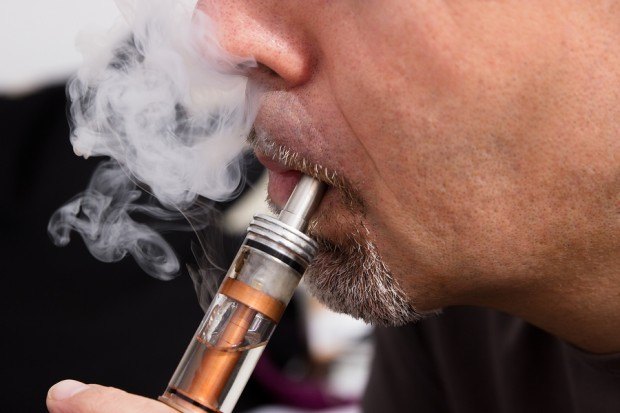Most patients stricken in a wave of vaping-related injuries had vitamin E acetate in their lungs, U.S. health officials found, reinforcing a suspected link between the compound and an outbreak that spurred a national debate about the safety of the devices.
Additionally, after a period in which scores of new cases were reported each week for several months, officials also said that emergency-room visits for possible lung damage due to vaping have declined substantially.
“It is clear that the outbreak represented a new phenomenon and not recognition of a common syndrome that had evaded our attention,” said Anne Schuchat, CDC principal deputy director, on a conference call with reporters.
The study, which analyzed fluid from the lungs of patients in 16 states, found only two with other potentially toxic substances in their lungs. The report provides strong circumstantial evidence that vitamin E is the main culprit in the outbreak. Schuchat suggested on the call that multiple suppliers were likely to blame for the widespread distribution of illicit products that sickened users.
Vitamin E acetate has been used as a cutting agent in e-liquids containing THC, the active ingredient in marijuana, often in illicit products. It may cause surfactant in the lung “to lose its ability to maintain the surface tension that is necessary to support respiration,” according to the study. When heated it may also break into another compound that irritates the lung, the CDC authors wrote.
Vitamin E likely caused the lung problems “in the vast majority of patients” during the current outbreak that started in June 2019, said Schuchat.
However, she cautioned that this doesn’t mean that e-cigarettes are safe, or that other substances in e-cigarettes won’t cause lung problems in the future. Going forward “there may be new spikes or surges” in vaping-related lung injury from other substances that may be harmful, she said.
Injury Peak
In a second study in the same journal, CDC researchers found emergency-room visits for vaping lung injuries rose sharply beginning in June 2019 and peaked in September.
They have declined since then, though ER visits remain higher than when the outbreak started in June. As of Dec. 17, there have been 2,506 cases where people were hospitalized for vaping-related lung injuries, and 54 confirmed deaths, according to the CDC.
In a third study, CDC researchers found 31 patients harmed by vaping had to be hospitalized a second time after being released from the hospital, and seven patients died after being released. The agency recommended that lung-injury patients be followed-up with by caregivers within 48 hours of leaving the hospital, shorter than the previous recommendation of 1 to 2 weeks.
Also, the U.S. Food and Drug Administration recently said that it and the Drug Enforcement Administration had seized 44 websites advertising the sale of illicit THC cartridges, as part of a wider investigation of the supply chain for illegal vaping products. None of the products touted on the sites have been confirmed to be linked to lung injuries, the agency said in a statement.





















 Slideshow: Carrier Management’s 2025 Top Editor’s Picks (Unlocked)
Slideshow: Carrier Management’s 2025 Top Editor’s Picks (Unlocked)  NOAA Announces Latest AI-Driven Global Weather Models
NOAA Announces Latest AI-Driven Global Weather Models  Good Times for U.S. P/C Insurers May Not Last; Auto Challenges Ahead
Good Times for U.S. P/C Insurers May Not Last; Auto Challenges Ahead  Breaking: Andersen to Replace Zaffino as CEO of AIG on June 1
Breaking: Andersen to Replace Zaffino as CEO of AIG on June 1 






